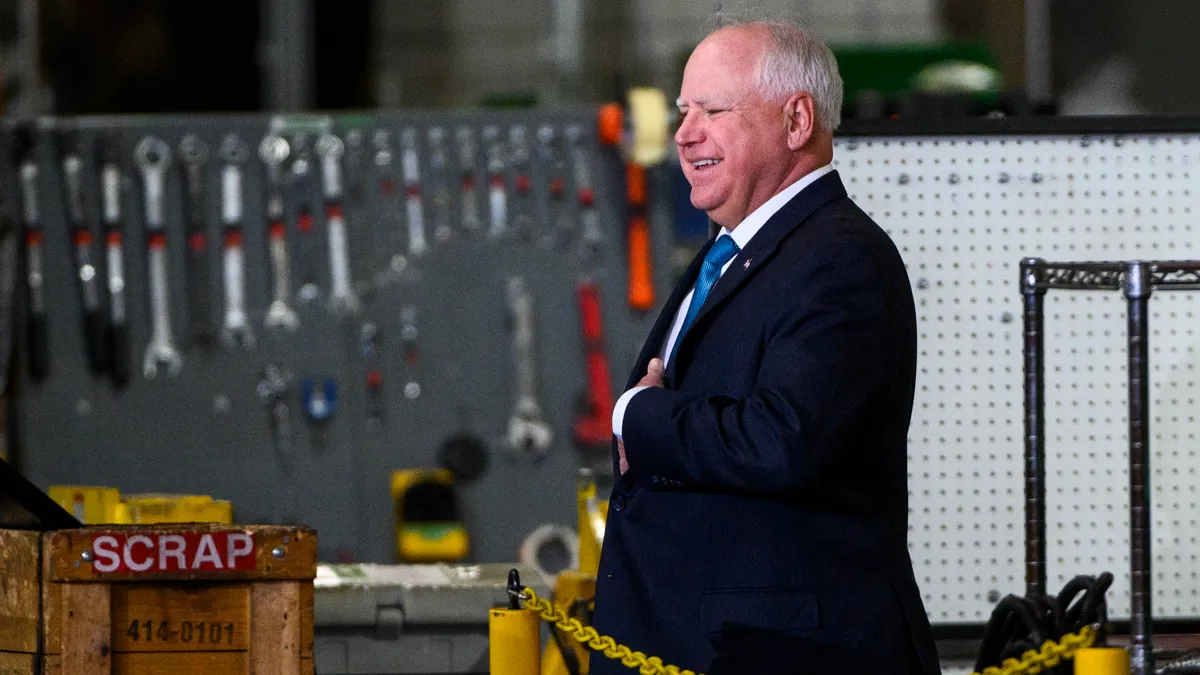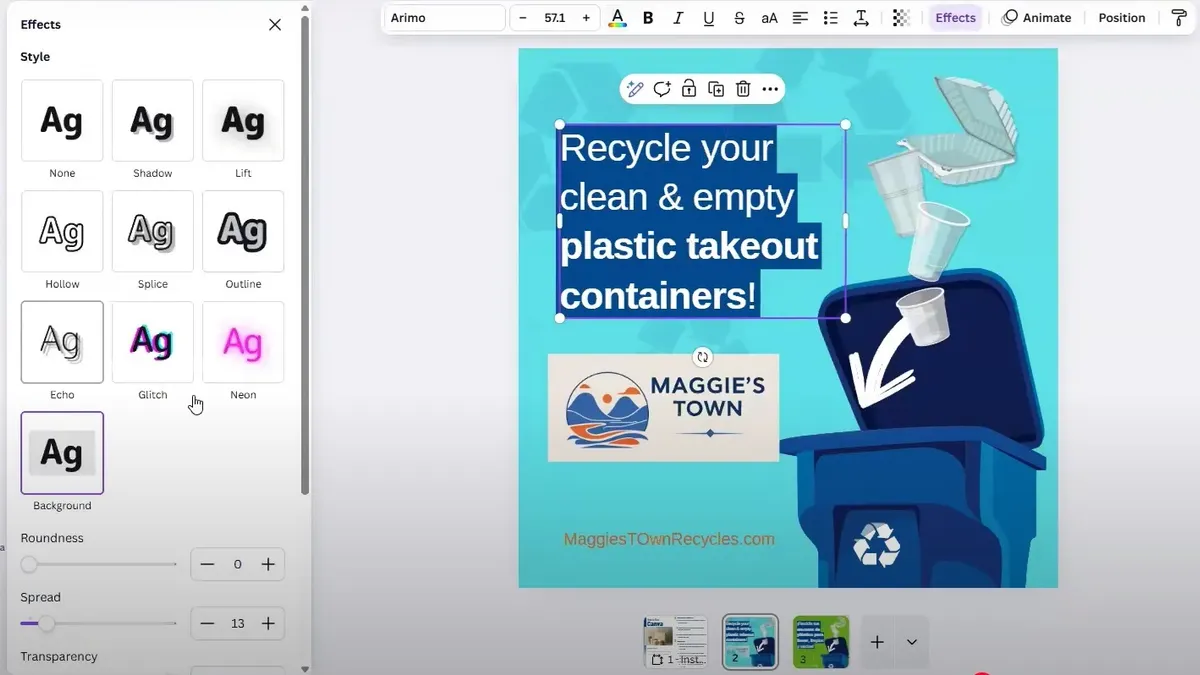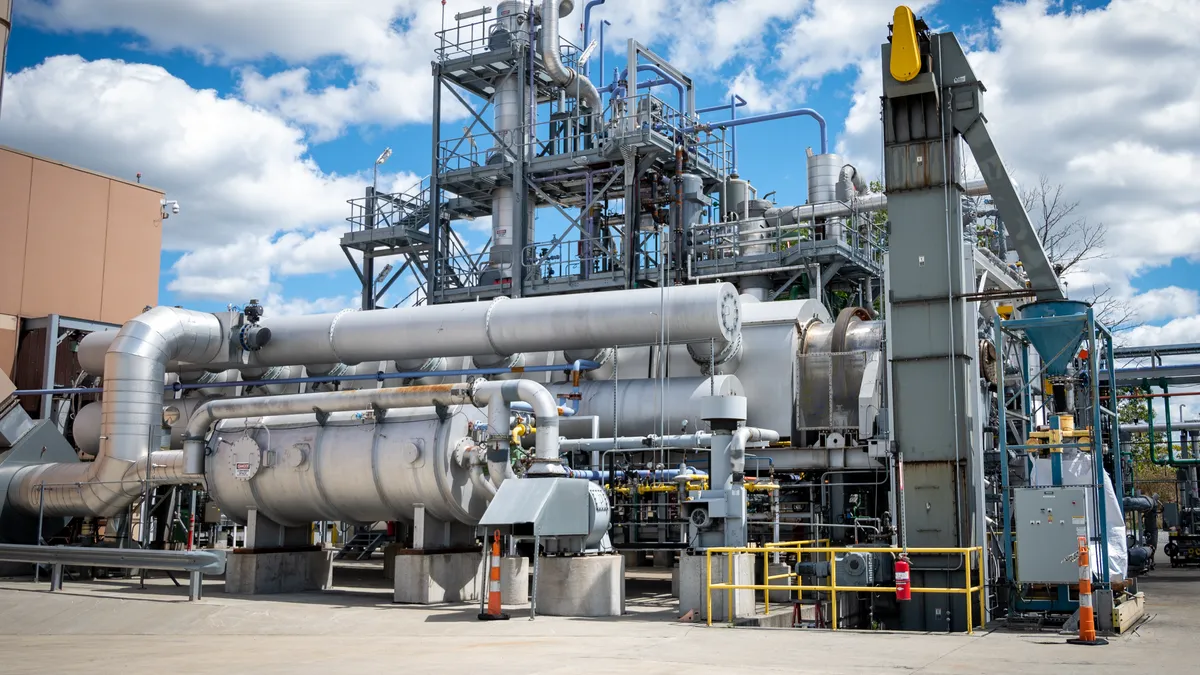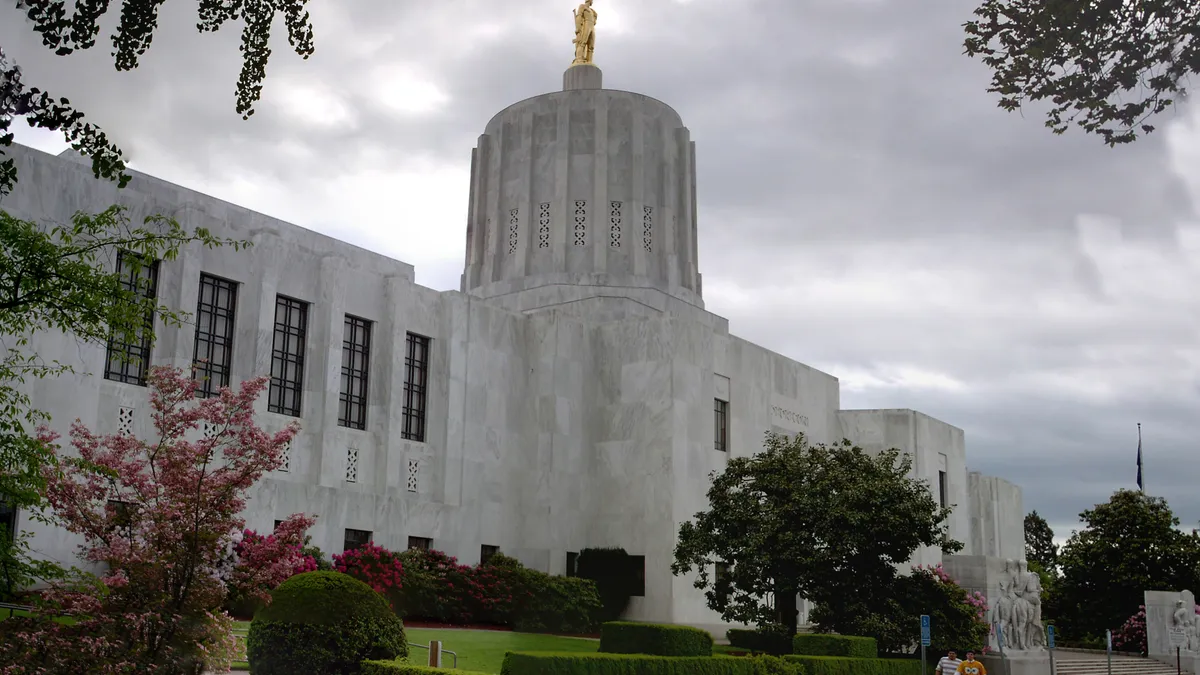Many across the recycling chain cheered this spring when Minnesota Gov. Tim Walz signed an extended producer responsibility for packaging bill into law. Policy and environmental experts shared how the sausage was made during a webinar hosted by the Product Stewardship Institute on Wednesday.
Minnesota’s law, which follows a “shared responsibility” model, will require paper and packaging producers to pay fees beginning in 2029 that ramp up in the years that follow.
In other states with EPR laws, “some have a recycling rate in statute, or maybe a waste reduction rate,” said Kirk Koudelka, assistant commissioner for land policy and strategic initiatives at the Minnesota Pollution Control Agency. “We have it all,” he said, highlighting goals around reuse and refill, recycling and composting, waste reduction and postconsumer content.
The 2024 effort dates back to at least 2021 when policy development formally began, explained Mallory Anderson, the lead bill advocate, who works as as policy specialist with Hennepin County in Minnesota.
Partners submitted a bill for the 2023 legislative session — the first time in a decade that Democrats controlled the House, Senate and governorship, Anderson explained — but packaging did not rise to the top as a priority, which delayed efforts to further develop a bill. That summer, partners got back to work on focus groups, building out two years of input.
“Stakeholders at times wanted something wholly opposite of another stakeholder,” said Anderson. “There are huge challenges with balancing producer control and flexibility. We developed a material-agnostic policy, and [let] the data drive what materials should be selected into the future, while also hearing for calls for material and toxic bans,” Anderson said. How to treat chemical recycling was also a complex issue.
“The introduced bill was a best effort to find an optimal place where we could still gain traction and get the bill passed to law,” Anderson said.
A bill was ready to go at the start of this year’s session on Feb. 12. In both the House and the Senate, it wound up in environmental omnibus bills. And after years of work, it culminated with being sent to the governor on May 19.
Along the way, exemptions became another big challenge, “with people coming out of the woodwork to claim their product’s unique and needing exemption,” Anderson said. “Our preference was to make as few exemptions as possible in the law and establish a review process as part of implementation, which you will see in the final law,” she explained.
Exemptions that were made were to ensure passage, she said. For example, “the paper mill exemption allowed us to keep paper and paper packaging, most importantly, as a covered material.”
Whether or not to name specific goals in the law was also a key sticking point. While some stakeholders wanted them, “it was clear that another path would be needed for a passable bill,” Anderson said. The compromise was that the MPCA commissioner would set enforceable goals after the needs assessment.
While the aim was to improve waste diversion outcomes and access across Minnesota, it’s also important to think about how state residents experience changes and benefits, Koudelka said. That could mean less packaging overall and better packaging that’s less toxic or actually recyclable. “How many people are sick of those plastic films that they can't recycle?”
Lucy Mullany, director of policy and advocacy at Eureka Recycling, a Twin Cities-based nonprofit recycler, has cautioned against overly relying on recycling as a solution to packaging waste.
“We don't want EPR for packaging to be a tool that just makes more materials recyclable when they could actually be reduced, moved to reuse or redesigned to readily recyclable material,” Mullany said.
As for how others can get involved in these processes in their own states, Mullany noted that it’s hard to influence a bill that’s already moving. Eureka was lucky to be at table early, she said. In Minnesota, stakeholders hope to get more voices involved in influencing the recyclability list as the law is implemented.
“When you're in the legislative process ... there's so many ups and downs and frustrations,” said Mullany. “It's exciting that we passed it,” but “the work continues,” particularly around setting rates and dates and enforcement, she said.
MPCA laid out a timeline for the next several years of implementation, describing 2025 and 2026 as building the foundation, 2027 to 2028 as establishing the structure and 2029 to 2032 as being focused on implementing change and tracking progress. Currently the agency is preparing and hiring staff.
SOURCE: Minnesota Pollution Control Agency
Interested in more packaging news? Sign up for Packaging Dive’s newsletter today.




















